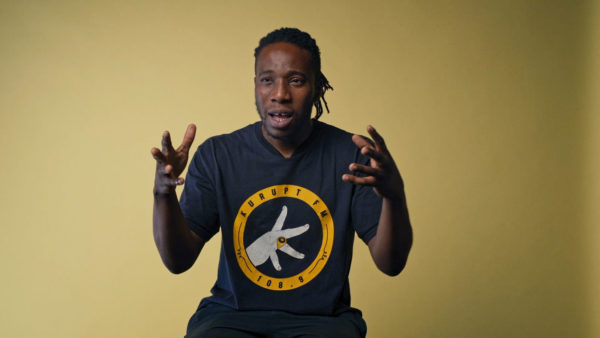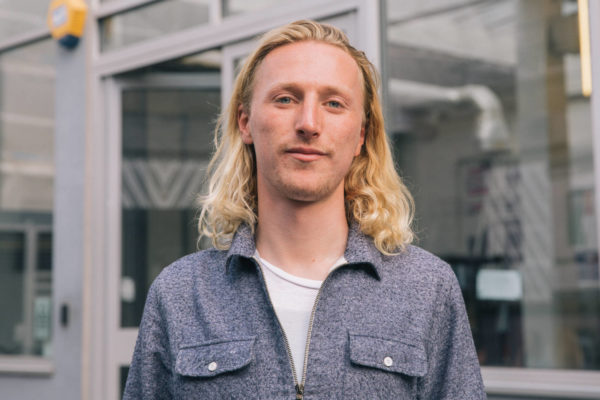Oobah Butler is an award-winning writer and filmmaker. Endorsed by the likes of Grayson Perry, Marina Hyde and former New Yorker editor Nicholas Thompson, but also described as “The Donald Trump of TripAdvisor” by the Washington Post, Oobah uses comedy and absurdity to both participate in and comment on the modern era.
WHAT’S HE MAKING?
Following his film The Shed – the story of how he transformed the outhouse he lived in into London’s top-rated restaurant on TripAdvisor – Oobah’s life has completely changed. From being the subject of an hour-long documentary on Japanese TV to having his name debated and story told in Singapore’s Parliament as MPs tried to come up with new legislation on fake news, it’s a far cry from what he was doing before. Oobah begins to experiment with this new life out of curiosity, wanting to see just how much of an active participant he is in it by getting a team of lookalikes to stand in for him in a series of global media interviews. But these aren’t just any lookalikes. Whether it’s somebody who possesses a PHD attending intellectual BBC Radio discussions, or male models pretending to be him on Indian TV, these lookalikes are each tailored to improve him in precise ways, optimising Oobah's media brand and identity.
VICE Film School: What’s the overarching aim of the film you’ve been making?
Oobah Butler: It’s another fun project, subverting the idea of what’s real and what’s fake.
You just delivered a piece-to-camera in a traditional, relaxed studio room at the VICE London offices. Where will this scene sit in the overall context of the film? What’s its job?
The scenes we’ve been filming in here since production started will form a central interview, like a commentary that runs through the whole thing, explaining what’s going on. All the other stuff is present-tense whereas this is more reflective – “This is what just happened in that last scene; this is why it’s important,” etc. I guess it’s like the narrative backbone of the film.
People find hard to follow my thought patterns at the best of times, so this felt like a nice way of tying everything together.
Why’s it important to have a narrative backbone in a film like the one you’re making?
Just because it’s so sprawling. Filming took place over such a long time and there’s so many different strands to it – I think people find it quite hard to follow my thought patterns at the best of times, so this felt like a nice way of tying everything together. Also, you can’t shoot 24 hours a day, and a lot of things happen when you’re not shooting, so this is a way of including all that and making sure it all fits together and makes narrative sense. There are plenty of things as well that just aren’t visually interesting – I might be scrolling through Likes on a Facebook page, for example, which is a very boring thing to film and watch. If I explain it in this section, it helps the film keep its momentum.
It’s quite calm and quiet in here. It’s just a studio room with a comfortable chair and a pot plant. Are those stripped-back aesthetics useful in terms of getting the scene right?
Definitely – having so many scenes that are sprawling and outlandish and filmed on the street, it helps to have something more centred, and with an easier atmosphere. The audience will listen more closely to this version of me; someone who’s calm and has more insight on what’s happening in the film – more than they’ll listen to the version who can’t stop giggling, anyway. It’s more authoritative.
You have a moment to collect your thoughts and explain what’s going on in a concise and direct way.
I heard you referencing some of the previous films you’ve shot when you were recording just now – is it important for people to have prior knowledge of those stunts to understand this one? Because it’s quite meta, isn’t it?
Yeah – this is umbilically tied to the shed-restaurant film, it’s a reaction to that. That’s the best way of putting it. Without the shed film getting so much attention, it wouldn’t have been possible to make this one, as the media requests wouldn’t have come in.
What is it you’re trying to convey to the audience in these to-camera link scenes?
It feels like a really effective and direct way of communicating with people in my voice. Being in here, in the peace and quiet, you have a moment to collect your thoughts and explain what’s going on in a concise and direct way.
I guess it’s also true that in a lot of the scenes you shoot, you’re undercover, and can’t break character in case the people around you realise that you’re pulling a stunt. Do these more reflective moments give you a chance to convey what you’re feeling when you’re undercover?
Yeah, completely. This is a nice way of being able to do that.
Continue Module
Work in Progress:
Pre-production
What is pre production anyway? How should it be done, and more importantly, how shouldn't it be done…
























